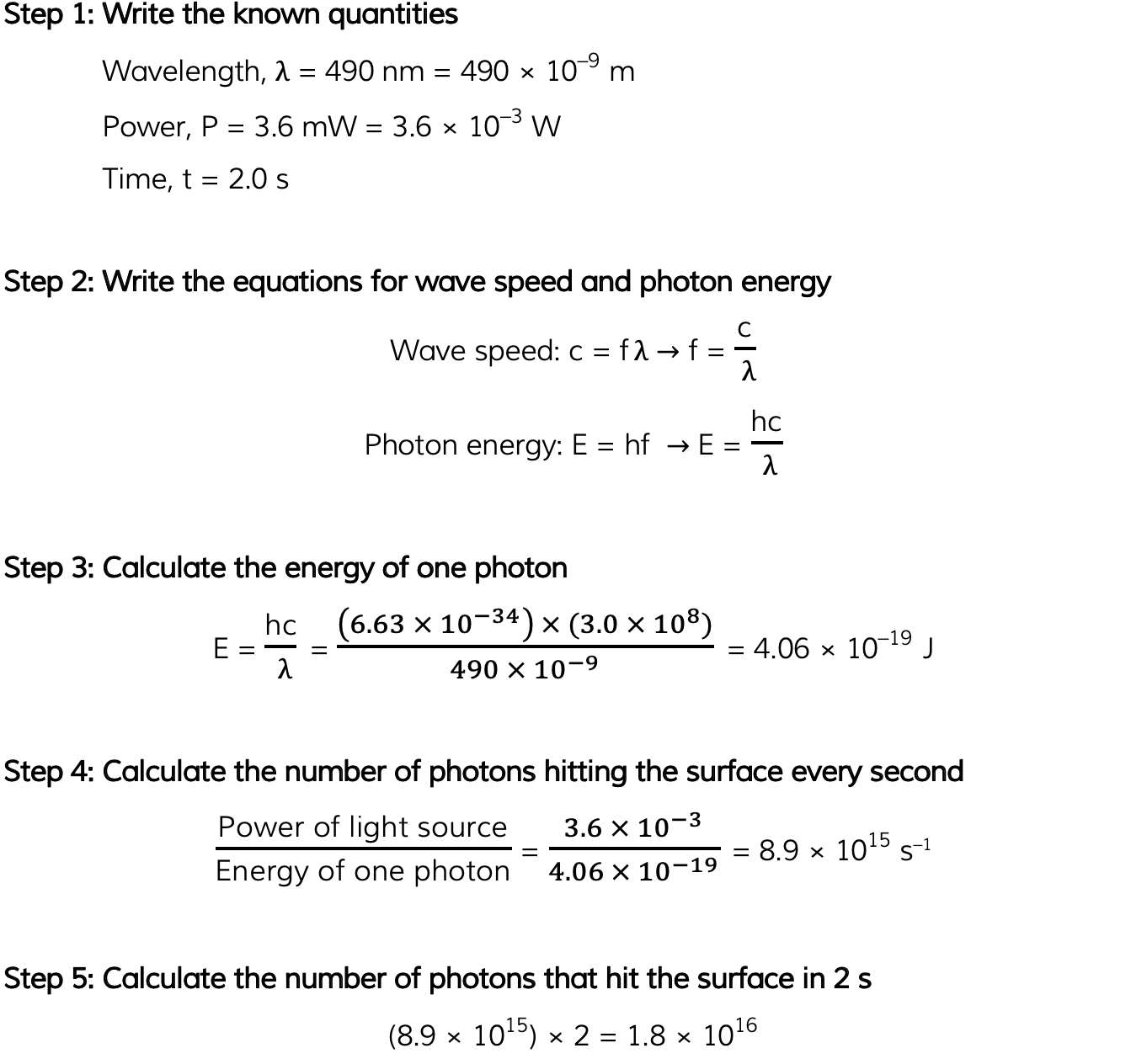Energy of a Photon (Edexcel International A Level (IAL) Physics): Revision Note
Exam code: YPH11
Energy of a Photon
Photons are fundamental particles which make up all forms of electromagnetic radiation
A photon is a massless “packet” or a “quantum” of electromagnetic energy
What this means is that the energy is not transferred continuously, but as discrete packets of energy
In other words, each photon carries a specific amount of energy, and transfers this energy all in one go, rather than supplying a consistent amount of energy
Calculating Photon Energy
The energy of a photon can be calculated using the formula:

Using the wave equation, energy can also be equal to:

Where:
E = energy of the photon (J)
h = Planck's constant (J s)
c = the speed of light (m s-1)
f = frequency (Hz)
λ = wavelength (m)
This equation tells us:
The higher the frequency of EM radiation, the higher the energy of the photon
The energy of a photon is inversely proportional to the wavelength
A long-wavelength photon of light has a lower energy than a shorter-wavelength photon
Worked Example
Light of wavelength 490 nm is incident normally on a surface, as shown in the diagram.

The power of the light is 3.6 mW. The light is completely absorbed by the surface. Calculate the number of photons incident on the surface in 2.0 s.
Answer:

Examiner Tips and Tricks
Make sure you learn the definition for a photon: discrete quantity / packet / quantum of electromagnetic energy are all acceptable definitions.
The values of Planck’s constant and the speed of light will always be available on the datasheet, however, it helps to memorise them to speed up calculation questions!

You've read 0 of your 5 free revision notes this week
Unlock more, it's free!
Did this page help you?